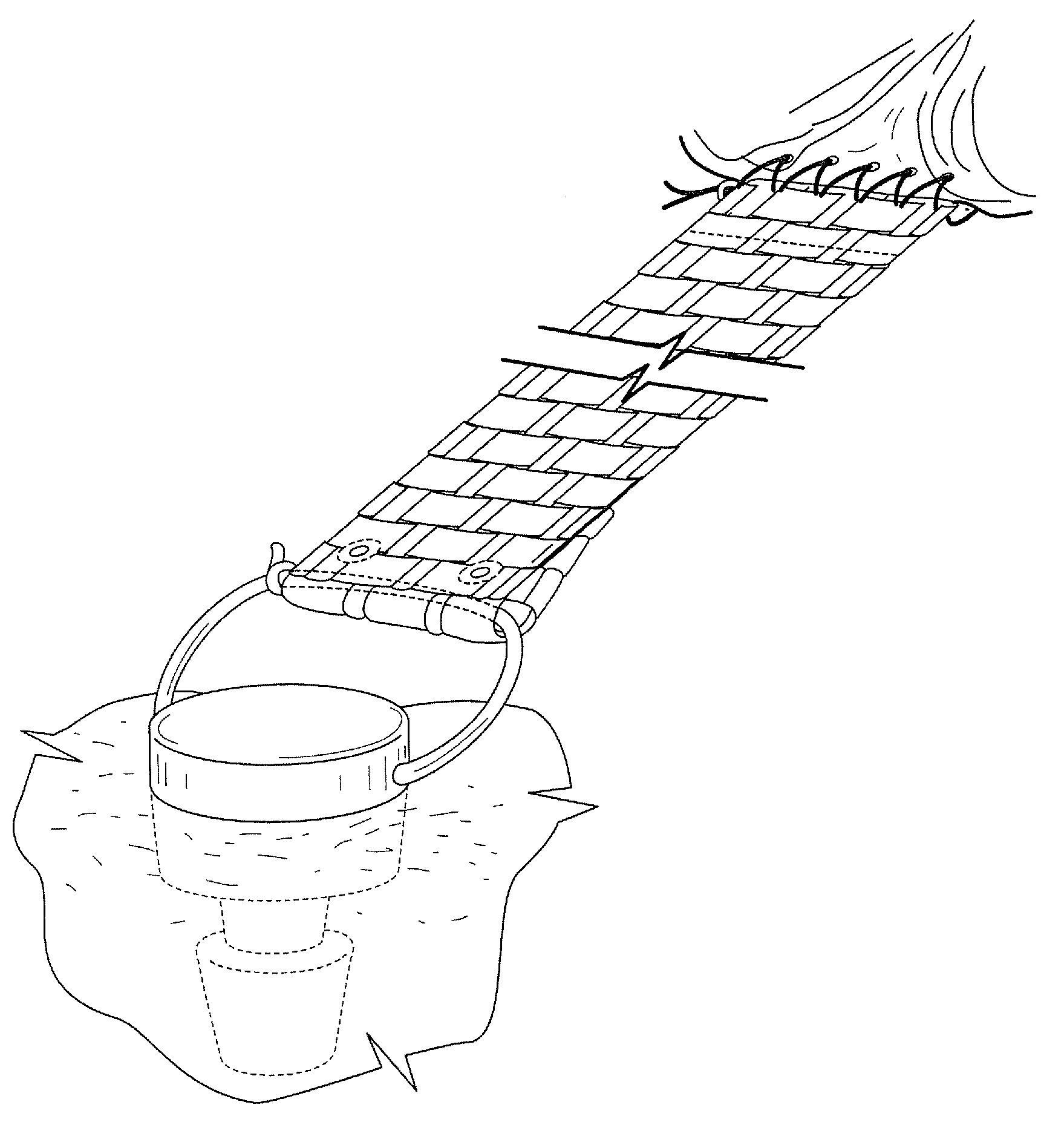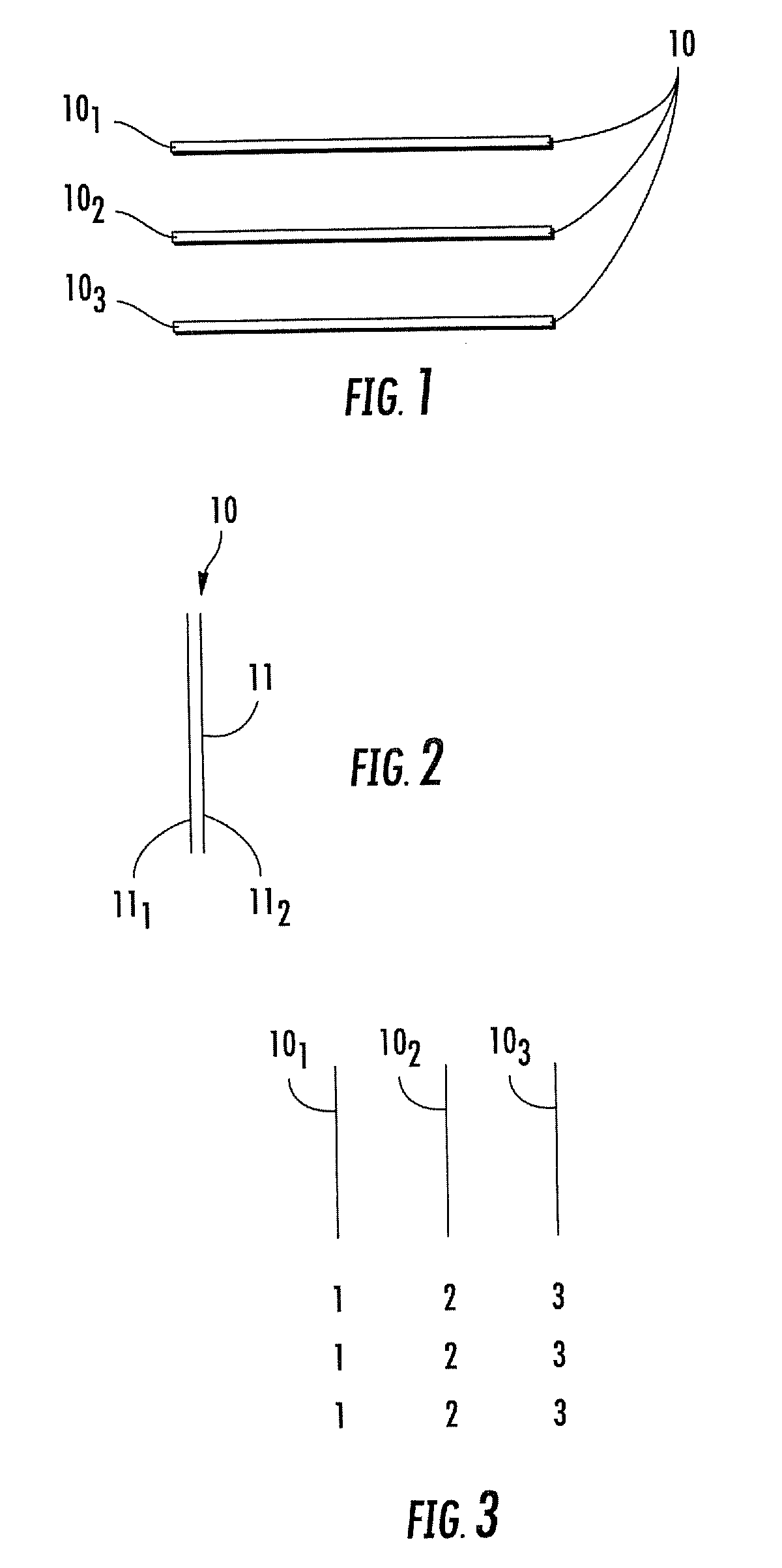Woven and/or braided fiber implants and methods of making same
a technology of fiber implants and fiber braids, applied in the field of implantable prostheses, can solve the problems of inability to carry normal loads, difficulty in repairing ruptured or lacerated tendons, and inability to regain original mechanical properties or mobility of tendon,
- Summary
- Abstract
- Description
- Claims
- Application Information
AI Technical Summary
Problems solved by technology
Method used
Image
Examples
examples
[0071]Eighty-one NDGA-collagen fibers were braided as 9 bundles of 9 parallel fibers each, as shown in FIGS. 10 and 11, and coated with gelatin for increased stability during handling. The size of this ribbon is 2.3×0.9×25 cm. The ribbon was used in an ex vivo evaluation of a thumb ulnar collateral ligament.
[0072]FIG. 10 illustrates the braiding method / configuration used to form the 81 fiber ribbon. FIG. 11 illustrates the actual braided NDA-collagen ribbon used for the ligament repair.
[0073]The goal was to create a prosthesis for thumb ulnar collateral ligament (UCL) reconstruction that is biocompatible, affords sufficient strength to allow early mobility motion protocols that provides a scaffold for native tissue ingrowth.
[0074]A collateral ligament bioprosthesis was designed using braided collagen fibers polymerized with NDGA. Ten fresh-frozen adult cadaver forearms were randomized into three treatment groups to test various methods of fixation of thumb UCL repair. All repairs we...
PUM
| Property | Measurement | Unit |
|---|---|---|
| Length | aaaaa | aaaaa |
| Length | aaaaa | aaaaa |
| Length | aaaaa | aaaaa |
Abstract
Description
Claims
Application Information
 Login to View More
Login to View More - R&D
- Intellectual Property
- Life Sciences
- Materials
- Tech Scout
- Unparalleled Data Quality
- Higher Quality Content
- 60% Fewer Hallucinations
Browse by: Latest US Patents, China's latest patents, Technical Efficacy Thesaurus, Application Domain, Technology Topic, Popular Technical Reports.
© 2025 PatSnap. All rights reserved.Legal|Privacy policy|Modern Slavery Act Transparency Statement|Sitemap|About US| Contact US: help@patsnap.com



